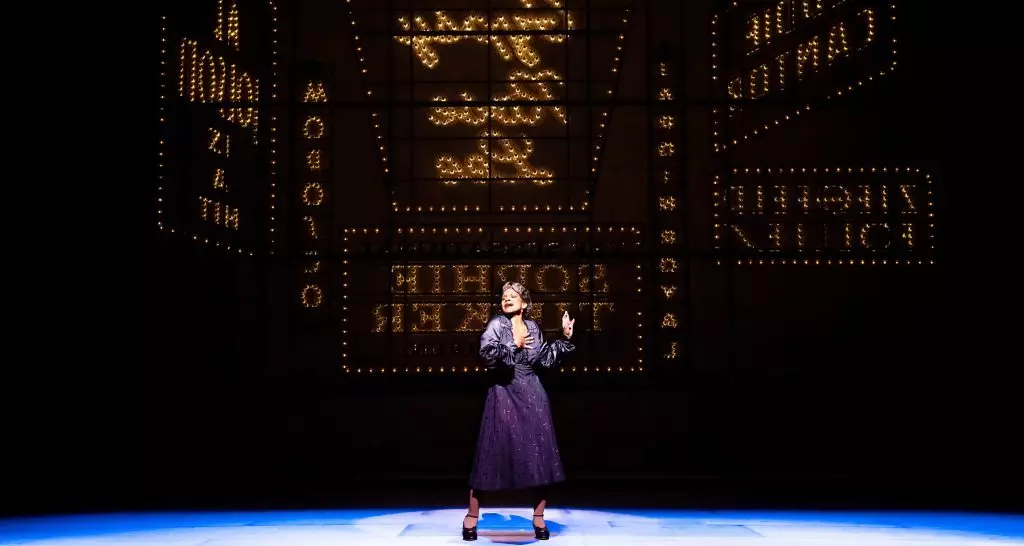Broadway’s recent downturn, marked by a significant drop in box office revenue and attendance, is masking underlying vulnerabilities that threaten its long-term vitality. The box office figures for last week reveal a 22% decline in gross revenue and a 12% decrease in attendance, a red flag for a thriving industry. This performance dip, while partly attributable to seasonal factors like holiday schedules and weather disruptions, suggests more profound issues at play—issues that, if unaddressed, could erode Broadway’s global cultural dominance. The fact that weekly gross revenue declined from over $30.5 million to below $25 million underscores a fragile recovery pattern in the face of mounting economic and social headwinds.
Temporary External Factors vs. Structural Flaws
While holidays like the Fourth of July and weather conditions temporarily suppressed ticket sales, these are superficial explanations for the industry’s current struggles. The absence of major stars in productions such as Gypsy and Call Me Izzy—star power that traditionally drives audiences—and the injury-related absences of performers like Megan Hilty exposed the fragility of the star-driven model that has long supported Broadway’s commercial success. When star power falters, so does ticket sales, revealing an overdependence on celebrities that cannot sustain industry growth. Moreover, shows like Boop! the Musical, which just closed after a lackluster run, reflect a broader trend of failing to innovate or adapt in a competitive entertainment landscape.
The Hidden Crisis of Audience Engagement
One of the more alarming signs lies in audience engagement. While shows like Wicked, Hamilton, and The Lion King enjoy perennial sell-outs, this fervor is not universally shared. Many productions operating at or below 50% capacity demonstrate that the magic of Broadway is not spreading as widely or as effectively as in previous decades. Younger audiences, in particular, are drifting toward digital entertainment, with streaming services and other immersive experiences offering more variety and convenience. This shift necessitates a reevaluation of how Broadway markets itself, particularly in an era where social media can make or break a show overnight.
Economic Realities and Ticket Prices
Another layer of the crisis is rooted in economic realities. The average ticket price for shows last week was $116.62, a figure that’s decreased by approximately $15 from the previous week. This dip indicates that producers are likely offering discounts or struggling to fill seats at standard prices. The erosion of premium ticket sales, especially from tourists and affluent theatergoers, could be a sign of broader economic strain. High inflation rates, post-pandemic financial adjustments, and lingering economic uncertainty discourage discretionary spending, leading to a downward spiral in revenue. When ticket prices decline, so does the perceived value—further diminishing Broadway’s premium appeal.
The Power Struggle Between Tradition and Innovation
Broadway has historically thrived on a delicate balance between tradition and innovation. However, recent trends show that the balance is tipping dangerously toward stagnation. Big-budget productions like Wicked and Hamilton continue to dominate, but newer or more experimental shows struggle to gain traction. The industry’s reliance on proven titles and star vehicles might deliver short-term revenue but fails to cultivate fresh audiences or diverse narratives that reflect the changing cultural landscape. Without bold innovation and meaningful engagement with younger generations, Broadway risks becoming a relic rather than a vibrant, evolving art form.
Strategic Shortcomings and the Path Forward
To reverse this decline, Broadway must confront its strategic shortcomings head-on. Relying heavily on established hits is no longer enough; the industry needs to foster new talent, diversify programming, and leverage modern marketing channels more effectively. Engaging audiences through digital platforms, immersive experiences, and social media campaigns can reignite interest and attract younger spectators. Additionally, fostering collaborations with global markets can help mitigate seasonality and regional economic impacts. Ultimately, Broadway’s resilience depends on its ability to adapt and innovate; resting on past laurels invites stagnation and decline.
Broadway’s recent downturn is a stark reminder that even the most iconic entertainment industries are vulnerable to economic shifts, social changes, and cultural fatigue. The industry must recognize that clinging to old models—reliant on star power and traditional marketing—won’t suffice in a rapidly evolving entertainment landscape. Embracing change, fostering innovation, and diversifying both content and audiences are imperative. Only through strategic adaptability can Broadway revive itself and continue captivating new generations, rather than becoming a nostalgic echo of its past glory.

